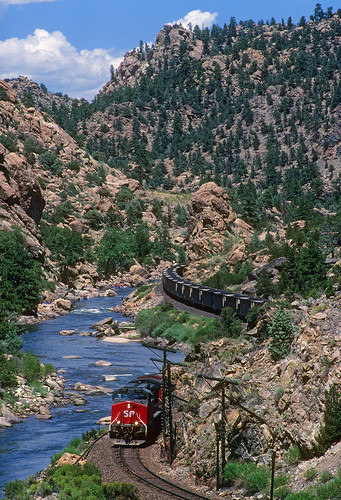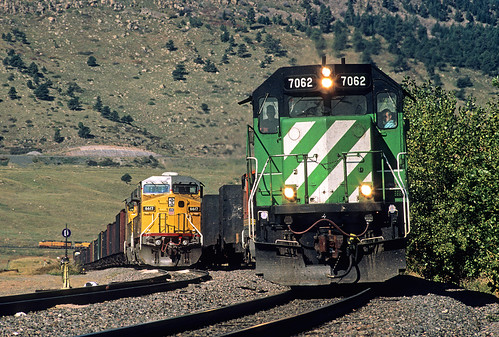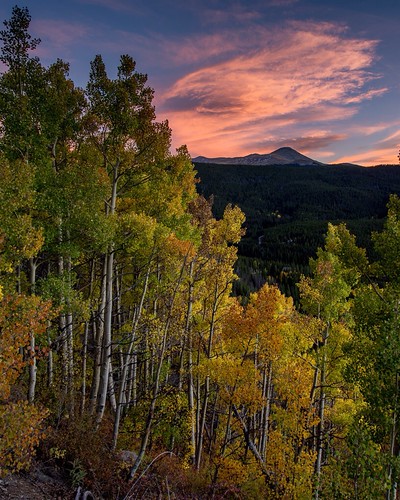 |
| Exactly what season it is might fool many a viewer but not locals and certainly not Joe Blackwell. He caught this BNSF southbound coal drag behind SD70MAC #9719 coming through Palmer Lake after the storm in the background left more than a little hail behind. Photo Joe Blackwell |
Today's POTD is a set of coming-and-going photos by Palmer Lake's Joe Blackwell. The recent spate of hailstorms that have rushed northward along Front Range has not passed unnoticed by railroad photographers. The juxtaposition of winter white from storms whose winds "shake the darling buds of May" with their bright green leaves seems irresistible to the shutterbug.
 |
| It's the same train, same vantage point, but a completely different perspective! BNSF SD70MAC #9767, from the same order as the lead unit, trails a pumpkin in almost mirror fashion of the other end of the train. The same cannot be said of the skies. Photo: Joe Blackwell |
Of particular interest is the contrast between the skies of the two photographs. This is no trick. The storm and the innocent-looking cotton puffs are indeed in the same sky. The only difference is the angle and the time it took for the length of the train to pass. It's just a hint of the volatile nature of springtime in the Rockies.◊





















